Universal practices instill high performance
What makes some companies like Intel, Southwest, and Ritz-Carlton perennial performers? Is their secret charismatic leaders? Good timing? Grand vision? No. High performance isn’t about what organizations do, but how they do it. Customer Success teams can apply the same disciplines used by top-performing companies to dramatically increase results.
Jim Collins, author of Built to Last and Good to Great, says “dynasty” companies (those generating financial returns of at least 10x for 15 years or more) behave very differently than the rest. Unlike typical organizations, top performers are fanatically disciplined, empirically creative, and productively paranoid.[1] Laser-focused and utterly relentless, they eliminate distractions and drive continuous improvement everywhere. Rather than follow industry experts or imitate others, top companies engineer their own breakthroughs using empirical evidence, observation and experimentation. And they remain hyper-vigilant, watching competitors intently and adjusting their strategies to thrive in a constantly shifting landscape.
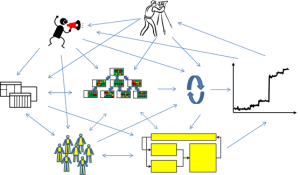
High performing organizations like the ones Jim Collins describes depend on a set of interconnected, self-reinforcing management systems to instill their unique behaviors. Their management disciplines become embedded in the organization’s “operating system,” creating a culture of excellence in individual work areas and throughout the enterprise. The management systems they use are universally applicable, so Customer Success leaders can use them to realize similar benefits:
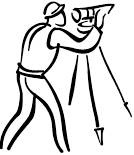 Sensory System
Sensory System
What it does: Methodically collects and interprets customer, market, competitive, regulatory, workforce, and technology trends to continually uncover new opportunities and threats.
Leading practices: Use quantitative and qualitative analysis extensively for market and product definition and performance monitoring. Implement internal and third-party “listening posts” in multiple channels. Increase relevance and salience by interpreting findings according to market segment. Systematically analyze, review and prioritize feedback for company business reviews, product roadmaps, and process improvements. Reduce “blind spots” by periodically challenging underlying assumptions and measurement techniques.
Application in Customer Success: Collect product usage, customer satisfaction, trouble ticket, and contact frequency statistics to generate health scores for specific customers and market segments. Utilize direct customer comments in CRM records and formal customer reviews for product and process deficiencies. Share discoveries via periodic, formal feedback sessions with development, sales, marketing, accounting, and operations leaders.
 Planning and Review System
Planning and Review System
What it does: Inputs information, prioritizes actions, defines objectives, goals, strategies, tactics, and owners, and aligns financial and personnel resources to promote successful execution. Evaluates progress formally and periodically, holding people accountable, adjusting plans, and promoting learning.
Leading practices: Develop strategic (multi-year) plans that articulate long-term vision, objectives and goals, customer and market dynamics, competition, product and service roadmaps, value propositions, value delivery systems, staff development, risks, and financial pro-formas. Link strategic with annual plans and implement through product development and process improvement plans. Coordinate planning and review activities via calendars, and use scenario analysis to detect and quickly respond to environmental “triggers.” Involve all employees to build commitment for action.
Application in Customer Success: Participate in enterprise planning activities, share customer intelligence and help set functional objectives, goals, strategies and tactics. Prioritize, define, implement and track account management and marketing plans along with process improvement projects. Review progress monthly and quarterly.
 People System
People System
What it does: Defines jobs, employee knowledge and skill requirements, and facilitates screening, hiring, training, performance feedback, career development and overall organizational change.
Leading practices: Define short-term and long-term staffing and skills requirements as well as succession plans aligned with the strategic plan. Use structured screening, hiring, training, retention, and cultural indoctrination practices. Conduct both formal and informal performance reviews. Interpret quantitative job performance measures in proper statistical context. Collaborate to define and hold employees accountable for development plan execution.
Application in Customer Success: Craft position plans, metrics, knowledge and skill requirements, and development plans for CSMs to build stronger relationships, deliver onboarding, and uncover and advance sales opportunities. Characterize and use personality traits, in addition to education and past experience, to screen new hires. Give regular feedback, formally and informally, and avoid ranking.
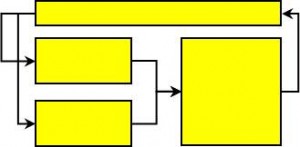 Work System
Work System
What it does: Describes requirements and designs optimal workflows at a macro and micro level between customers, business partners, suppliers, company departments and work groups.
Leading practices: Map processes to identify critical handoffs, disconnects, metrics, and process improvement opportunities. Periodically redesign processes for enhanced speed, cost effectiveness and increased quality. Protect and develop core competencies to promote strategic advantages. Use partnership management and supply chain management techniques to influence change and improvement with third parties.
Application in Customer Success: Define the customer lifecycle linking onboarding, training, engagement, renewals, upselling and cross-selling activities using phone, e-mail, video, events, webinars, and social media contact as required. Define critical handoffs and feedback loops with sales, customer support, development, and accounting.
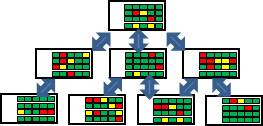 Metrics System
Metrics System
What it does: Focuses managers and teams on the critical few cause-and-effect relationships that keep processes under control and promote beneficial end results.
Leading practices: Deploy and manage daily operations across the enterprise via linked, balanced and aligned dashboards. List a critical few leading and lagging indicators in each dashboard to measure key business process performance, especially attributes driving competitive distinction and financial results. Calibrate dashboard signals using customer specifications or statistical process limits. Review periodically, take corrective action, and launch process improvement projects as signals dictate. Benchmark performance against competitors and “best in class” process references.
Application in Customer Success: Construct dashboards measuring outcomes (renewal rate, new revenue, etc.) and process factors leading to them (conformance to contact schedule, 30-day adoption %, etc.) as appropriate to the defined CSM role. Use a total of ten or fewer metrics, rolling up individual statistics into overall team performance. Set “red,” “yellow,” “green” action limits based on historical performance or goals articulated in the annual plan. Make dashboards visible in work areas, review and discuss performance with team members at least monthly.
 Continuous Improvement System
Continuous Improvement System
What it does: Manages projects emphasizing customer focus, teamwork, and scientific methods to uncover root causes of problems, driving ongoing improvement in products, services and internal processes.
Leading practices: Execute cross-functional improvement projects using formal methods such as Lean Six Sigma, process simulations, and predictive analytics to maximize results. Choose projects based on financial or strategic impact, including major initiatives linked to annual and strategic plans. Increase effectiveness and customer value and reduce customer dissatisfaction, cycle times, and inefficiencies in all products and processes. In SaaS companies, diminish downstream bug detection, remediation, and customer churn costs through better upstream product definition, software development and validation processes.
Application in Customer Success: Implement formal methods to collect data and analyze processes to determine changes that increase customer retention and revenue and lower the Cost to Serve. Use statistical techniques such as logistic regression to study factors that impact customer churn, such as adoption rate, unresolved trouble tickets, or contact frequency. Design and execute experiments to test new ideas. Participate in company feedback loops to report software bugs and advocate for product and service enhancements.
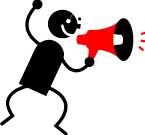 Leadership System
Leadership System
What it does: Provides strategic direction, prioritizes actions, engages and inspires employees to perform at high levels, learn, and enact changes.
Leading practices: Articulate clearly and broadly communicate company mission, vision, values, goals and strategic plans. Engage the workforce and lead strategic change using formal processes. Model by example, recognize and reward high performance, and develop new leaders throughout the organization. Provide and receive performance feedback.
Application in Customer Success: Define the team’s purpose, goals and values. Understand and align with what motivates individual team members. Recognize and reward performance and hold people accountable. Incorporate leadership effectiveness feedback from superiors and employees in personal development plans.
When Customer Success leaders run their operations using the seven management systems above, their results rival the very best performers. Excellence becomes part of the culture, and customer churn, referrals and revenue relentlessly improve.
Excel-lens is an online publication of Service Excellence Partners. We increase customer loyalty and business performance in the could computing industry. Don’t miss an issue–subscribe today!
Source:
[1] J. Collins, M. T. Hansen, 2011. Great by Choice: Uncertainty, Chaos and Luck—Why Some Thrive Despite Them All.
